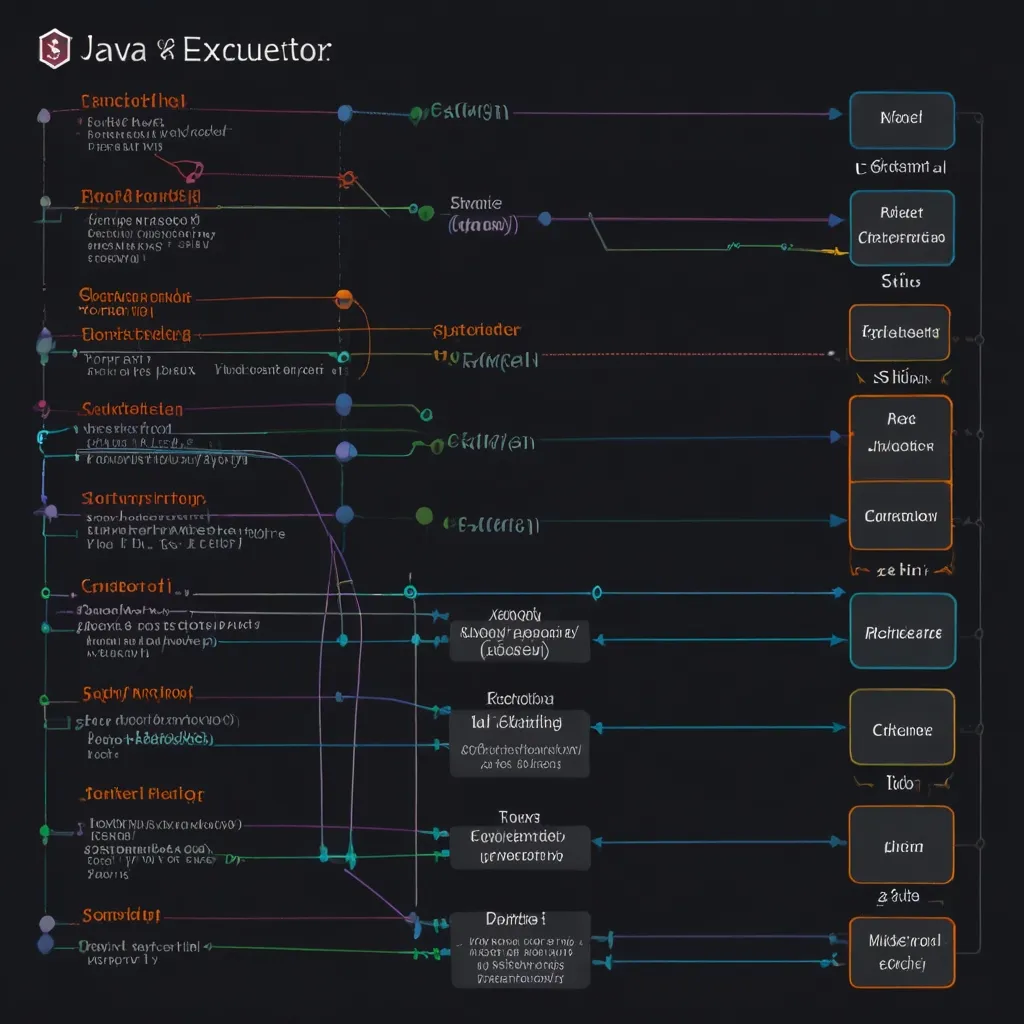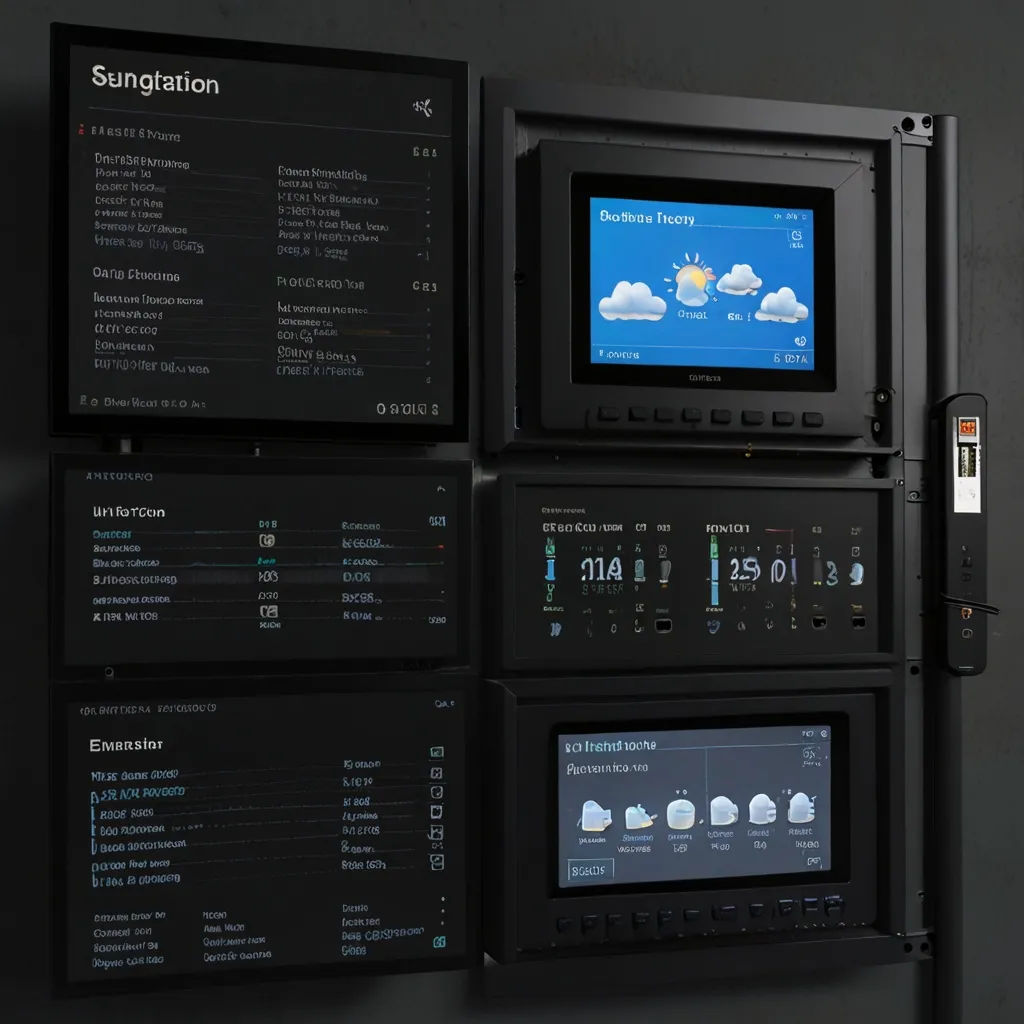Let’s dive into the world of IoT dashboards! As a developer, I’ve always been fascinated by the power of real-time data visualization, especially when it comes to Internet of Things (IoT) applications. Today, we’re going to explore how to create a full-stack IoT dashboard using Vue.js and MQTT.
First things first, why Vue.js and MQTT? Well, Vue.js is my go-to framework for building reactive user interfaces. It’s lightweight, easy to learn, and incredibly flexible. As for MQTT, it’s the perfect protocol for IoT communication - lightweight, publish-subscribe, and designed for constrained devices and low-bandwidth networks.
Now, let’s get our hands dirty! We’ll start by setting up our Vue.js project. If you haven’t already, install Vue CLI:
npm install -g @vue/cli
Then, create a new Vue project:
vue create iot-dashboard
cd iot-dashboard
With our project set up, let’s add the MQTT client library. We’ll use mqtt.js:
npm install mqtt
Now, let’s create our main dashboard component. Create a new file called Dashboard.vue in your components folder:
<template>
<div class="dashboard">
<h1>IoT Dashboard</h1>
<div v-for="sensor in sensors" :key="sensor.id">
<h2>{{ sensor.name }}</h2>
<p>Value: {{ sensor.value }}</p>
</div>
</div>
</template>
<script>
import mqtt from 'mqtt'
export default {
name: 'Dashboard',
data() {
return {
client: null,
sensors: [
{ id: 1, name: 'Temperature', value: 0 },
{ id: 2, name: 'Humidity', value: 0 },
],
}
},
mounted() {
this.connectMQTT()
},
methods: {
connectMQTT() {
this.client = mqtt.connect('mqtt://localhost:1883')
this.client.on('connect', () => {
console.log('Connected to MQTT broker')
this.client.subscribe('sensors/#')
})
this.client.on('message', (topic, message) => {
const [, sensorId] = topic.split('/')
const value = parseFloat(message.toString())
const sensor = this.sensors.find(s => s.id === parseInt(sensorId))
if (sensor) {
sensor.value = value
}
})
},
},
}
</script>
This component sets up a basic dashboard that displays sensor data. It connects to an MQTT broker running on localhost and subscribes to all sensor topics.
Now, let’s talk about the backend. We’ll need an MQTT broker to handle our messages. For this example, I’ll use Mosquitto, a popular open-source MQTT broker. On Ubuntu, you can install it with:
sudo apt-get install mosquitto mosquitto-clients
Once installed, Mosquitto will start automatically. You can publish test messages using the mosquitto_pub command:
mosquitto_pub -t sensors/1 -m 25.5
mosquitto_pub -t sensors/2 -m 60
These commands simulate sensor data being published to our MQTT broker.
Now, let’s add some pizzazz to our dashboard with charts! We’ll use Chart.js for this. Install it along with the Vue wrapper:
npm install chart.js vue-chartjs
Create a new component called SensorChart.vue:
<template>
<div class="chart-container">
<line-chart :chart-data="chartData" :options="chartOptions" />
</div>
</template>
<script>
import { Line } from 'vue-chartjs'
export default {
name: 'SensorChart',
components: {
LineChart: Line,
},
props: ['sensor'],
data() {
return {
chartData: {
labels: [],
datasets: [
{
label: this.sensor.name,
data: [],
borderColor: '#3e95cd',
fill: false,
},
],
},
chartOptions: {
responsive: true,
maintainAspectRatio: false,
},
}
},
methods: {
updateChart(value) {
const now = new Date()
this.chartData.labels.push(now.toLocaleTimeString())
this.chartData.datasets[0].data.push(value)
if (this.chartData.labels.length > 20) {
this.chartData.labels.shift()
this.chartData.datasets[0].data.shift()
}
this.$refs.chart.updateChart()
},
},
}
</script>
This component creates a line chart that updates in real-time as new sensor data comes in. Now, let’s update our Dashboard component to use this chart:
<template>
<div class="dashboard">
<h1>IoT Dashboard</h1>
<div v-for="sensor in sensors" :key="sensor.id">
<h2>{{ sensor.name }}</h2>
<p>Value: {{ sensor.value }}</p>
<sensor-chart :sensor="sensor" :ref="'chart' + sensor.id" />
</div>
</div>
</template>
<script>
import mqtt from 'mqtt'
import SensorChart from './SensorChart.vue'
export default {
name: 'Dashboard',
components: {
SensorChart,
},
// ... rest of the component code
methods: {
connectMQTT() {
// ... existing connect code
this.client.on('message', (topic, message) => {
const [, sensorId] = topic.split('/')
const value = parseFloat(message.toString())
const sensor = this.sensors.find(s => s.id === parseInt(sensorId))
if (sensor) {
sensor.value = value
this.$refs['chart' + sensor.id][0].updateChart(value)
}
})
},
},
}
</script>
Now we have a dynamic, real-time IoT dashboard! But we’re not done yet. Let’s add some interactivity. How about the ability to control our IoT devices from the dashboard?
Let’s add a simple toggle switch for a hypothetical smart light. First, install the vue-switches component:
npm install vue-switches
Now, update your Dashboard.vue:
<template>
<div class="dashboard">
<!-- ... existing code ... -->
<div class="smart-light">
<h2>Smart Light</h2>
<switches v-model="lightOn" @input="toggleLight" />
</div>
</div>
</template>
<script>
import Switches from 'vue-switches'
export default {
// ... existing code ...
components: {
SensorChart,
Switches,
},
data() {
return {
// ... existing data ...
lightOn: false,
}
},
methods: {
// ... existing methods ...
toggleLight(value) {
this.client.publish('devices/light', value ? 'ON' : 'OFF')
},
},
}
</script>
This adds a toggle switch that publishes messages to control our hypothetical smart light.
Now, let’s talk about security. In a real-world scenario, you’d want to secure your MQTT connections. You can do this by using TLS for encryption and implementing username/password authentication. Here’s how you might update your MQTT connection to use secure WebSockets and authentication:
connectMQTT() {
const options = {
protocol: 'wss',
username: 'your_username',
password: 'your_password',
}
this.client = mqtt.connect('wss://your-broker-url:8884/mqtt', options)
// ... rest of the connection code
}
Remember to configure your MQTT broker to use TLS and set up user authentication.
As your IoT system grows, you might want to consider using a backend service to process and store your sensor data. You could use Node.js with Express to create a REST API that interacts with a database like MongoDB. This would allow you to implement features like historical data viewing and data analysis.
Here’s a quick example of how you might set up an Express server to handle MQTT messages and store them in MongoDB:
const express = require('express')
const mqtt = require('mqtt')
const mongoose = require('mongoose')
const app = express()
const client = mqtt.connect('mqtt://localhost:1883')
mongoose.connect('mongodb://localhost/iot_dashboard', { useNewUrlParser: true, useUnifiedTopology: true })
const SensorDataSchema = new mongoose.Schema({
sensorId: Number,
value: Number,
timestamp: { type: Date, default: Date.now },
})
const SensorData = mongoose.model('SensorData', SensorDataSchema)
client.on('connect', () => {
client.subscribe('sensors/#')
})
client.on('message', (topic, message) => {
const [, sensorId] = topic.split('/')
const value = parseFloat(message.toString())
const sensorData = new SensorData({
sensorId: parseInt(sensorId),
value: value,
})
sensorData.save((err) => {
if (err) console.error('Error saving sensor data:', err)
})
})
app.get('/api/sensor/:id', async (req, res) => {
try {
const data = await SensorData.find({ sensorId: req.params.id }).sort('-timestamp').limit(100)
res.json(data)
} catch (err) {
res.status(500).json({ error: 'Error fetching sensor data' })
}
})
app.listen(3000, () => console.log('Server running on port 3000'))
This server subscribes to MQTT topics, stores incoming sensor data in MongoDB, and provides an API endpoint to retrieve historical data.
To wrap things up, building a full-stack IoT dashboard with Vue.js and MQTT is an exciting journey. It combines the reactive power of Vue.js with the lightweight, real-time capabilities of MQTT to create a dynamic and responsive IoT monitoring solution. As you continue to develop your dashboard, consider adding features like user authentication, data analytics, and maybe even some machine learning for predictive maintenance.
Remember, the IoT world is vast and constantly evolving. This dashboard is just the beginning. As you build and expand your IoT projects, you’ll discover new challenges and opportunities. Maybe you’ll integrate with cloud platforms like AWS IoT or Google Cloud IoT, or perhaps you’ll explore edge computing to process data closer to your devices.
Whatever path you choose, keep experimenting, keep learning, and most importantly, have fun! The Internet of Things is a playground of endless possibilities, and you’re now equipped with the tools to start building amazing things. Happy coding!






